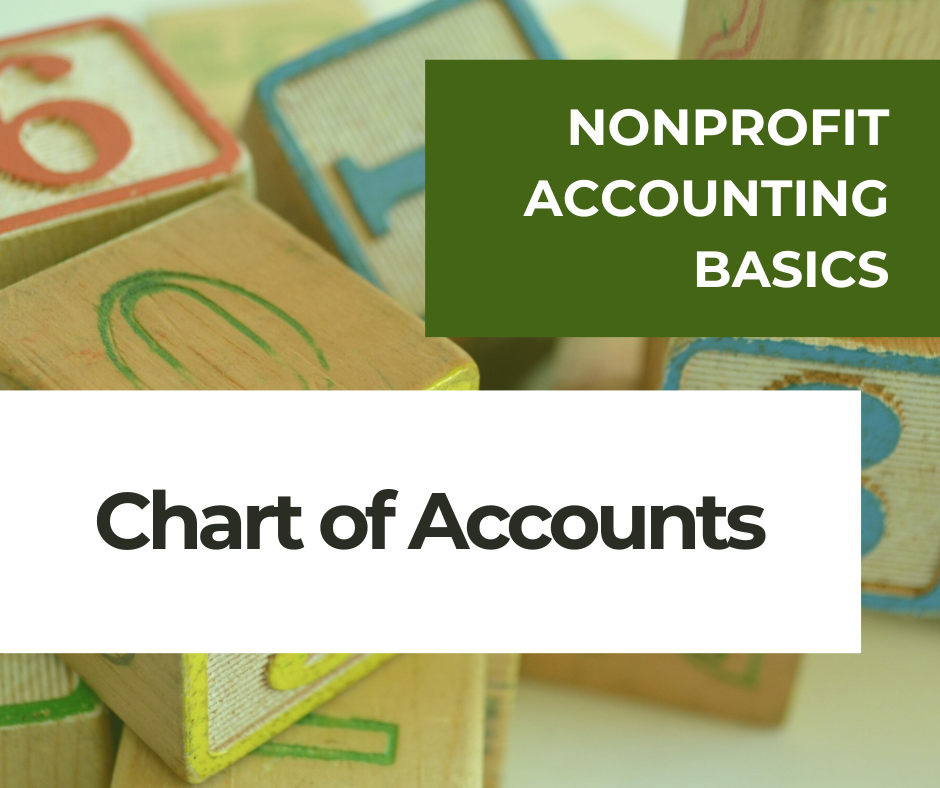Nonprofit leaders wear many hats – fundraiser, program manager, team coordinator, administrator…the list goes on. But it’s often the “accountant” hat that causes the most discomfort. Whether you’re a director, volunteer, or board member, you probably didn’t get into nonprofit work for the pleasure of reconciling bank accounts.
In this series, we’ll explore some of the basic accounting concepts that every nonprofit professional should know.
Chart of Accounts
The chart of accounts is the backbone of your accounting system. This is a comprehensive list of all “accounts,” or categories, that are used to organize your financial activity. A nonprofit chart of accounts typically includes:
Asset accounts – bank and investment accounts, accounts receivable, fixed assets, prepaid expenses
Liability accounts – accounts payable, loan balances, deferred revenue
Net asset accounts – unrestricted net assets, restricted net assets
Income accounts – donations, grants, membership dues, merchandise sales, special event income
Expense accounts – rent, utilities, supplies, payroll expenses
While a sample chart of accounts is a good starting point for a new organization, your chart of accounts will likely grow and change over time to best suit your organization’s specific budgetary needs and financial activities.
Why Do I Need a Chart of Accounts?
The chart of accounts is used to organize financial information into various financial statements and reports that can be shared with your nonprofit staff, board members, and the public. For example, your management team may review a Statement of Activities to analyze the organization’s income and expenses and make budgetary decisions. A Budget Vs. Actual report can help your department leaders stay on track throughout the year. And the Statement of Financial Position gives a clear picture of the organization’s assets and liabilities. None of these reports will be meaningful without a thoughtfully developed chart of accounts.
Your chart of accounts also helps outside parties understand how your organization manages money. Grantors often will ask to see a set of financial reports before they decide to grant funds to your organization. Your chart of accounts should help these grantors and other potential donors to quickly identify your organization’s important financial activities. Additionally, your Form 990 requires expenses to be broken down into specific categories. Preparing your Form 990 will be much easier if your chart of accounts is organized with these requirements in mind.
Make Your Chart of Accounts Work for You
A well-planned chart of accounts can make your accounting more efficient while providing meaningful information to those who need it. If you have too few accounts, you may have trouble untangling different financial activities or drilling down into more detail. On the other hand, having too many accounts can be overwhelming and may make it difficult to see the big picture.
It’s often best to start with a small chart of accounts and grow as needed. For your asset and liability accounts, start with what your organization already has. Think about what you own and what you owe. In the future, if you acquire new assets (like a new piece of equipment or a real estate purchase) or if you incur a new liability (like a new loan or line of credit) you can expand your chart of accounts at that time.
For your income and expense accounts, think about how your organization brings in money and how you typically spend it. It is important to have enough detail that your financial reports are meaningful, but it doesn’t have to be too nitty-gritty. For example, if your organization has a lot of frequent travel costs, you may find value in breaking those costs down by airfare, lodging and meals. But if you don’t travel often, you might be fine with just one catch-all account for all travel expenses. If you’re not sure, start with the simplest version while leaving room to grow.
It’s important to remember a chart of accounts can and will change over the life of your organization. If your accounts are set up in a way that doesn’t work for you anymore, identify the problem and adjust your chart of accounts to fix it.
Need more help? At Altruic Advisors, our nonprofit accountants have helped more than 500 organizations across the country with outsourced accounting, Form 990 preparation, and nonprofit audit services. Together, we can help you create good.




